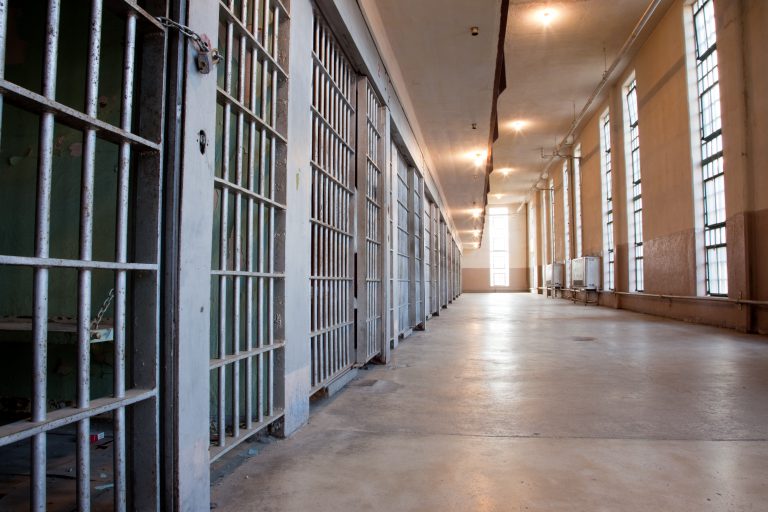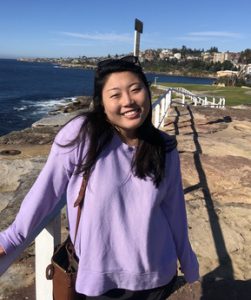Latino Representation in the Criminal Justice System
There are disparities present in how the justice system treats communities of color, including the Latino population. These disparities are greatest for Black populations, which can include people who identify as Afro-Latino. However, Latinos are not exempt from facing discrimination throughout the justice system. Despite increased representation in police force personnel, the criminal justice system continues to produce disproportionate negative outcomes for the Latino population. With the release of Alliance for a Better Community’s Latino/a Scorecard Report: A Policy Roadmap for Transforming Los Angeles (Latino/a Scorecard), which assesses and grades Latino representation and justice in multiple policy areas, this story takes a deeper dive into public safety for Latinos at the neighborhood, county, and system level.


Northeast Los Angeles Policing and Neighborhood Change
At a neighborhood level, there are instances of Latino discrimination in policing. A cluster of neighborhoods in Northeast Los Angeles are particularly notable. Analysis of data from the NDSC Criminal Justice Data Initiative shows that in twelve adjacent neighborhoods in that area with a population at least 33% Latino, police stops of Latino residents repeatedly made up a disproportionate percentage of overall stops. While this type of discrimination isn’t exclusive to these neighborhoods, the repeated occurrence in a concentrated area is notable. In all twelve neighborhoods, Latino residents were the subject of at least 10% more police stops than their share of the population. For example, in Montecito Heights, a neighborhood that is 63% Latino, 90% of police stops were focused on Latino residents in 2017 – a difference of 27%. Police stop discrepancies of at least 20% towards Latino residents were also repeatedly documented in Chinatown, Eagle Rock and Mount Washington. Atwater Village, Glassell Park and Lincoln Heights also reported higher police stops than their share of the Latino population for at least four of the five years studied between 2011 and 2018.
The disproportionate policing of minority residents is often a trend that follows the gentrification of communities, which is currently taking place in Northeast Los Angeles. Over the past 8 years, these Northeast Los Angeles neighborhoods experienced an increase in White residents, as well as an increase in median household income, which increased from about $55,000 in 2010 to $62,000 in 2018 in all but one neighborhood. And while the number of total police stops declined or stayed the same in all but two of the neighborhoods over this time period, the share of stops of both Latino and Black residents increased.
Los Angeles County Incarceration Trends
These disparities remain true when looking at Los Angeles County as a whole. According to public safety data in the Alliance for a Better Community’s Latino/a Scorecard in 2019, Los Angeles County law enforcement stopped Latino people at a slightly higher rate than White people, at 34 stops compared to 31 stops per 1,000 individuals. However, the difference between arrest rates among Latinos and Whites were even greater; with 27 Latino arrests and only 18 White arrests out of the 1,000 individuals.
Additionally, an analysis by the Los Angeles Times finds that despite the fact that Los Angeles police officers search Black and Latino people more often, they are less likely to be carrying contraband than White people that are stopped. Similarly, the Los Angeles Times reports that since 2018, 13% of those fatally shot by LAPD officers were Black and 67% were Latino despite the fact that Los Angeles’ population is 9% Black and 49% Latino.

Lastly, within the Los Angeles County carceral system, there are 1.5 times the number of Latinos in jail compared to White people and 2.5 times the number of Latinos in prison compared to White people. This suggests that Latino people are receiving harsher punishments and continuously face disproportionately high rates of policing in Los Angeles County.
Los Angeles Criminal Justice System—Positions of Power
Understanding the disparities in minority policing requires an examination of the broader criminal justice system in Los Angeles. While Latinos make up roughly half of the total sworn personnel at the Los Angeles County Sheriff’s Department (LASD) and the City of Los Angeles Police Department (LAPD), a closer analysis reveals that Latinos are underrepresented in higher positions and positions of authority among sworn personnel. Additionally, at the court level, out of the 484 judges in Los Angeles County Trial Courts, only 15% of these judges are Hispanic or Latino while 52% are White, and there are no Hispanic or Latino judges in the 2nd Appellate District. Though Latinos may be represented in the police force on average in Los Angeles County, there is a distinct lack of representation present specifically throughout higher power positions in the justice system.
Representation in the police force is important to community perceptions and trust of law enforcement. A 2020 survey conducted by Loyola Marymount University discovered that the Latino participants were more likely (37%) to respond that LAPD engagement in their communities was “somewhat bad” or “very bad” when compared to all respondents (30%).
Conclusion
Historically excluded populations such as Black and Latino communities have been and continue to be disproportionately targeted by the criminal justice system. Across the county, Latino residents are disproportionately stopped by police, arrested, and incarcerated. There is also evidence that gentrification in Los Angeles may correlate with discriminatory police stops. And though Latinos are well represented in the Los Angeles police force at first glance, a closer look reveals power imbalances within the criminal justice system as well. Policing has historically been a powerful tool for community control and oppression, and these trends make it clear that discrimination towards Latinos in the Los Angeles criminal justice system is a significant issue.


Aileen Qin
Aileen is a Master of Urban Planning (Class of 2022) student at the USC Sol Price School of Public Policy with a concentration in environmental planning and analysis. She obtained her undergraduate degree in environmental studies with a minor in gender and sexuality studies from Rhodes College in Memphis, TN. Aileen’s interests lie in GIS mapping and public parks and her dream is to utilize GIS technology to create accessible greenspaces that serve as solutions to a wide variety of community problems. She is originally from Houston and enjoys hiking, farmer’s markets, and the color pink!

Kelsey Taeckens
Kelsey Taeckens is a Master of Public Policy student at USC Price. She holds a BA in International Affairs from Northeastern University. Prior to studying at USC, she worked at J-PAL North America in Boston and the Institute for Economics and Peace in Sydney, Australia, where she learned to appreciate the power of data analysis in designing effective public policy. Her primary research interests are sustainability, climate change, and social equity.
Sources
Alliance for a Better Community. (2021). The Latino/a Scorecard Report: A Policy Roadmap for Transforming Los Angeles. https://afabc.org/how-we-do-it/latino-scorecard/
Chang, C. (2021, March 14). Fatal shootings by the LAPD are down, but officials find major problems in many incidents. Los Angeles Times. Police Commission finds flaws in LAPD fatal shootings – Los Angeles Times (latimes.com)
Guerra, F., Gilbert, B., Vizireanu, M., and Dunsker, M. (2020). Police Data Brief: 2020 Police and Community Relations Survey. Thomas and Dorothy Leavey Center for the Study of Los Angeles, Loyola Marymount University. LMUstudyLA Data Brief – 2020 Police Data Brief.pdf | Powered by Box
Laniyonu, A. (2017). Coffee Shops and Street Stops: Policing Practices in Gentrifying Neighborhoods. Urban Affairs Review, 54(5), 898-930. https://doi.org/10.1177%2F1078087416689728
Painter, G., Schoen, E, and Southers, E. (2019). NDSC Criminal Justice Data Initiative: Year 1 Wrap Report. Sol Price Center for Social Innovation, USC Price. NDSC Criminal Justice Data Initiative: Year 1 Wrap Report – Price Center for Social Innovation (usc.edu)
Poston, B. and Chang, C. (2019, October 8). LAPD searches blacks and Latinos more. But they’re less likely to have contraband than whites. Los Angeles Times. Analysis: LAPD searches blacks and Latinos more often – Los Angeles Times (latimes.com)
Photo Attributions
Cover Photo: Photo courtesy of Istock/simpson33
Photo 1: Photo courtesy of Istock/jtgriffin07
Photo 2: Photo courtesy of Istock/kali9
Photo 3: Photo courtesy of Istock/MivPiv
Photo 4: Photo courtesy of Istock/FiledIMAGE

